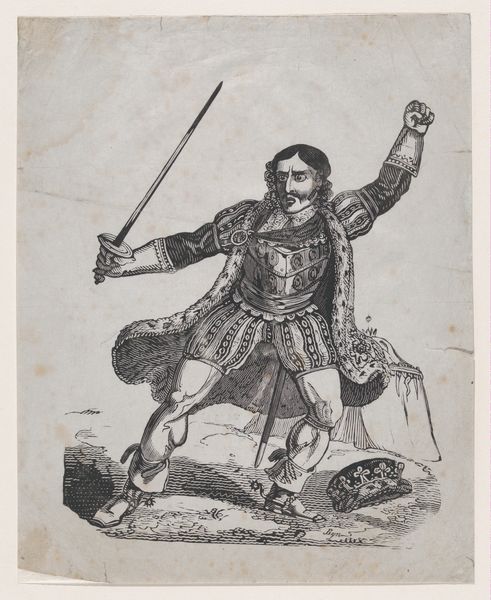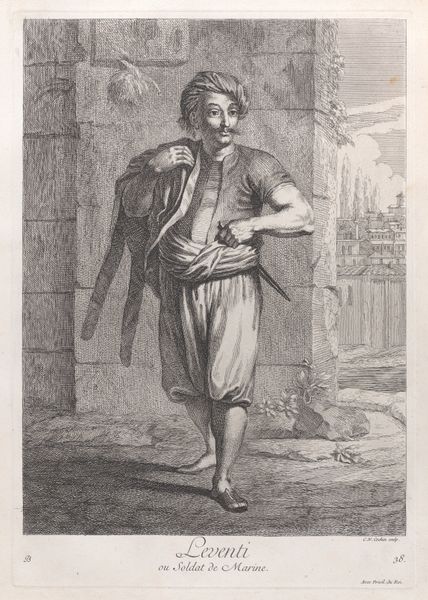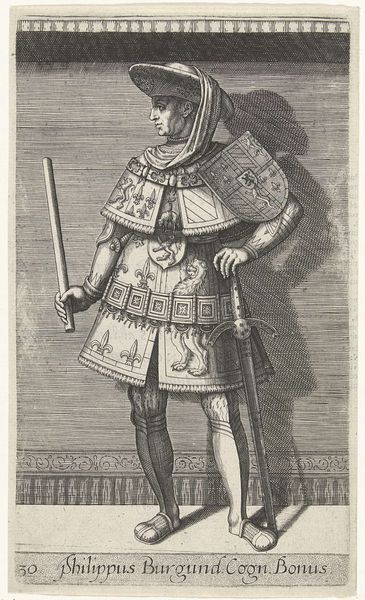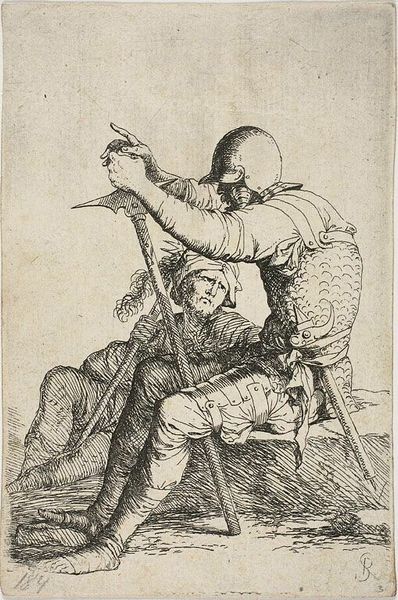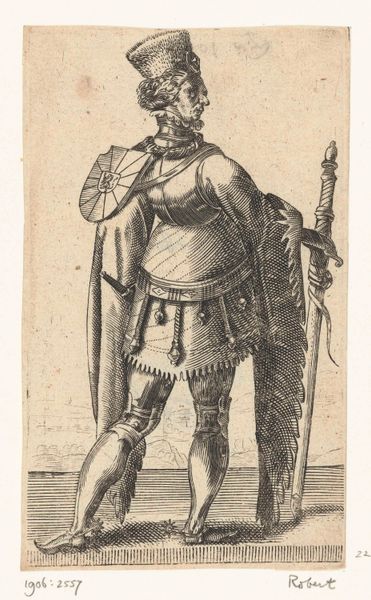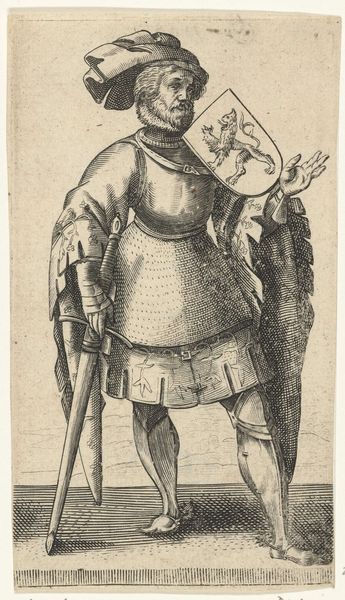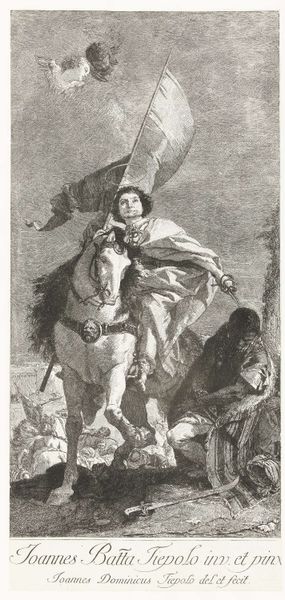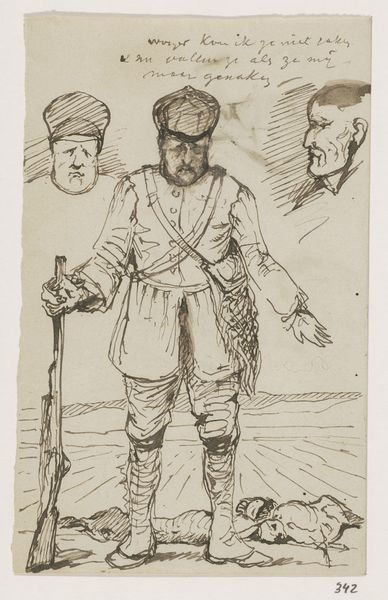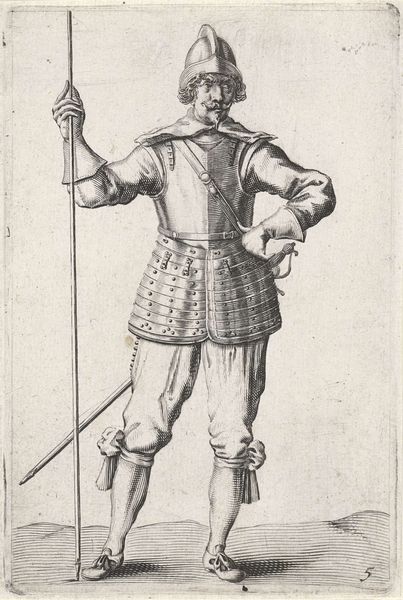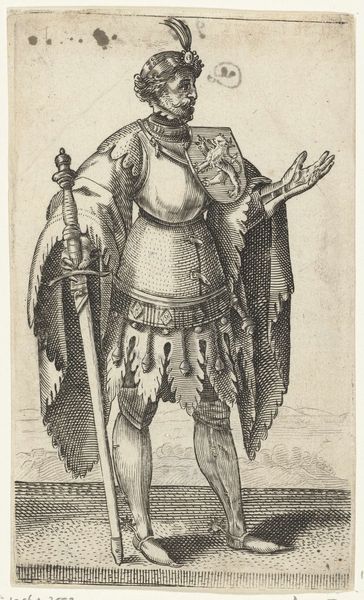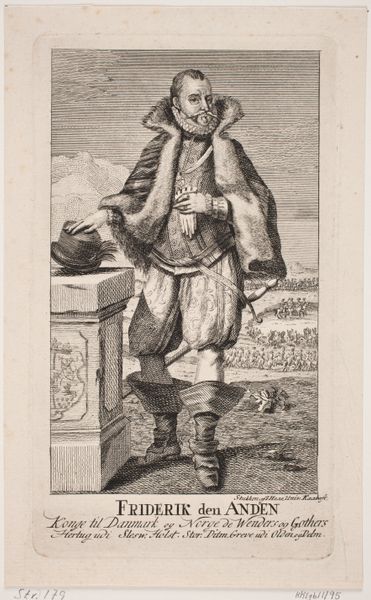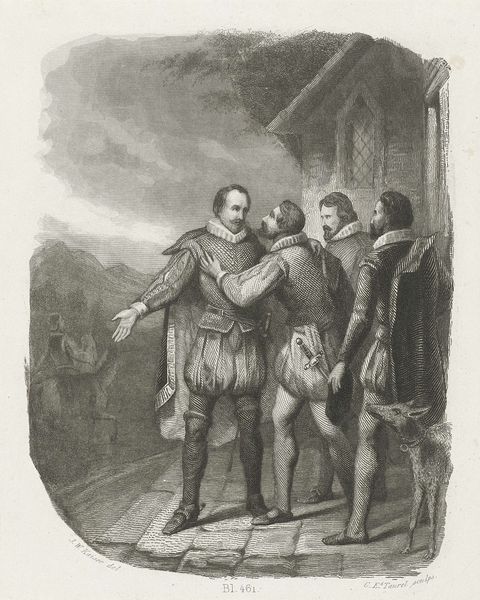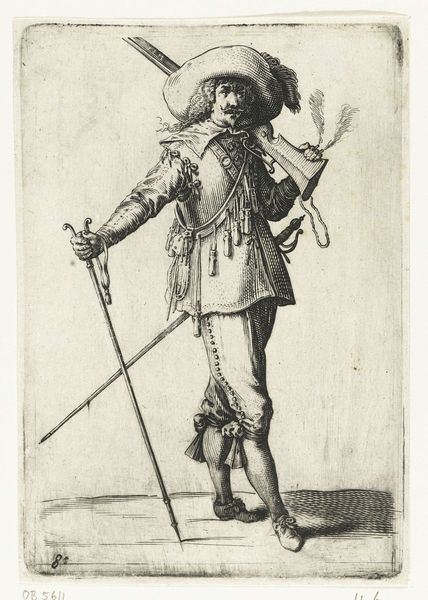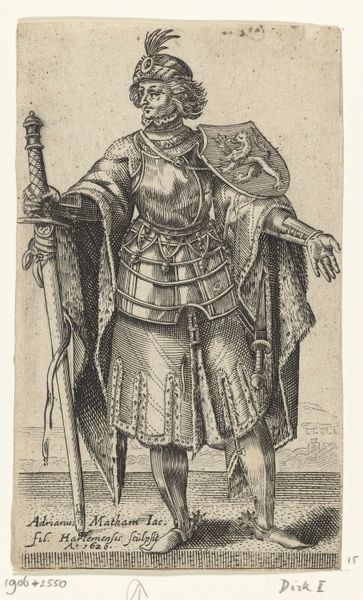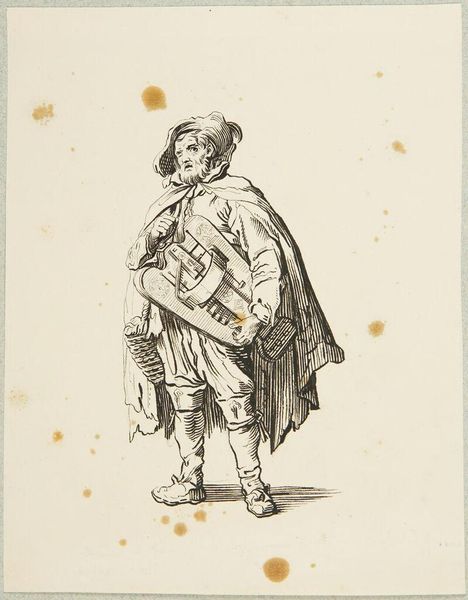
painting, oil-paint
#
portrait
#
figurative
#
painting
#
oil-paint
#
figuration
#
oil painting
#
genre-painting
#
history-painting
#
academic-art
#
realism
Copyright: Public Domain: Artvee
Curator: Let’s turn our attention to Gustave Courbet’s “Louis Gueymard,” an oil painting from 1857. It depicts a man in what appears to be a medieval or historical setting. Editor: Immediately, I am struck by the central figure’s almost defiant stance and fiery orange tunic. The texture seems rich, almost theatrical. It’s… assertive. Curator: Indeed. Consider the strategic deployment of colour, anchoring the portrait. Beyond mere representation, it uses an unapologetic color palette to evoke a dramatic narrative, supported by the texture and handling of oil paint. It signals an approach of Realism through color that departs from established artistic norms. Editor: Absolutely, and the clothing contributes to that departure! This representation feels almost anachronistic. Is it questioning how operatic depictions of masculinity were often deployed in mid-19th-century France? The costuming challenges typical heroic male roles within both artistic and societal spheres. It almost satirizes how masculinity is constructed through attire and performance. Curator: You point to crucial considerations! Courbet, with the use of academic artistic traditions in history painting, actively challenged accepted societal roles while still adhering to established painting structures of portraiture. The placement of the chainmail in a seemingly Realist painting evokes Romantic historical painting styles—all while the subject raises a toast to the viewer, subverting painting and societal standards. Editor: It seems to point to the staging of performance for historical narratives, rather than an exact record. Perhaps Gueymard—whose expression is complex to discern—is performing heroism, rather than embodying it? Curator: That nuanced consideration complicates any facile reading, but you could be correct! This portrait serves as a space for exploring themes such as national identity, performance, and artistic interpretation within the setting of nineteenth-century France. Editor: Looking closely allows a critical gaze toward artistic techniques and social conventions, reflecting on the complex layers of representation found within its medium and historical environment. Curator: I agree that, considering these features, this work extends an invitation for ongoing consideration beyond form and narrative constraints!
Comments
No comments
Be the first to comment and join the conversation on the ultimate creative platform.
